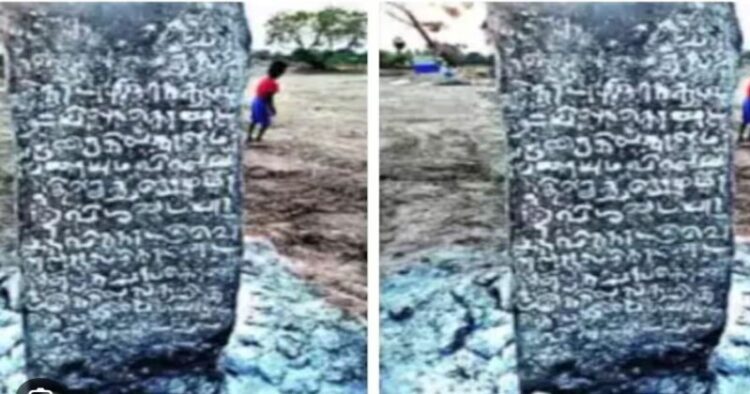Recent excavations near Tiruverumbur, Trichy, have unearthed the remains of an ancient Shiva temple dating back to the 10th century AD, offering a glimpse into the illustrious reign of the Chola dynasty. The discovery, made in the village of Kumbakudi, has sparked excitement among historians and locals, heralding a significant chapter in the region’s rich cultural heritage.
The Chola kings, known for their patronage of temples and architectural marvels, left an indelible mark on Tamil Nadu’s landscape. With their reverence for Shaivism, the Imperial Cholas established their ancient capital in Urayur, near Trichy, further emphasising the region’s historical significance.
Despite the temple’s dilapidated state, the local Shiva worship group, in collaboration with villagers, has embarked on a mission to restore and renovate the ancient structure. In honour of Shivratri, a special worship ceremony was organised within the temple precincts, underscoring the enduring spiritual significance of the site.
The discovery was brought to light by Dhanasekhar, an employee at the central government’s HABP factory in Trichy, who notified the Aatrupadai Historical Society about the temple’s existence. Parthiban, a member of the society, led the survey and noted the intricate stone carvings within the temple, which offer a glimpse into the architectural prowess of the Chola period.
An inscription attributed to Vikrama Chola, discovered within the temple, provides valuable insights into the town’s history. The inscription refers to the area as a subdivision of “Pandiya Kulasani Valanatu Tenkarai Brahma Theyam Sri Cholamadevi Chaturvedi Mangalam,” signifying its significance in temple affairs and the study of the four Vedas.
The name “Kumpakudi” has persisted for over a millennium, according to vernacular dailies. Historical records indicate that individuals such as Kumbakkudi Natalvan, a Vellalar from Kavir Naadu, along with the Cholamadevi Sabha, contributed land to the temple. Additional inscriptions mention Anbilurudayar and Thiruvenkadudayar near Lalgudi, further enriching the historical context surrounding the temple’s discovery.
Parthiban suggests that a detailed study of the temple’s scattered construction stones could provide valuable insights into life during the Chola period, offering a deeper understanding of the region’s cultural and architectural heritage.
Remains of a 10th Century Shiva Temple discovered near Tiruverambur, Tiruchirapalli.
As per the info from locals, a heritage group inspected the site and found 3 inscriptions, out of which only one inscription was readable which is of Vikrama Chozha. pic.twitter.com/EA0FeMz3gK
— Ethirajan Srinivasan 🇮🇳🚩(Modi Ka Parivaar) (@Ethirajans) March 9, 2024
Historians Raj Panneerselvam and Udayaraja, conducting field research in the Ulundurpet region of Kallakurichi district, have stumbled upon an extraordinary archaeological find – a remarkable stone sculpture depicting Ayyanar, situated on the lakeshore of Gunamangalam town within the Ulundurpet circle. The discovery has sparked intrigue and excitement among scholars and locals alike, shedding light on the rich cultural heritage of the region.
The intricately carved bas-relief sculpture, measuring approximately 3 feet in width and 4 feet in height, portrays Ayyanar, a revered deity in Tamil Nadu folklore. Ayyanar is depicted wearing a beaded round crown, adorned with an earring (Bhadra kundalam), with elongated ears, and a round face adorned with a moustache. He is depicted seated in Utkuthikasana on a pedestal, exuding a majestic presence with his left hand resting on the pedestal and his right hand hanging by his leg.
At the feet of Ayyanar, intricate details depict a dog and goat, while he is draped in a styled cloth (Yogga pattai) around his right leg from the shoulder. He wears a loin cloth with a short sword attached to it. Two water pots are illustrated, one near his right leg and another near the dog, while a rooster is depicted near his left thigh. Adjacent to Ayyanar, a horse is depicted on the upper right side, and a female worker fans (Samaram – made of peacock feathers) the deity on the left side. Nearby lies a prostrate figure in a somewhat damaged state.
In a separate discovery in Tiruvarur, the native place of DMK leader M Karunanidhi, the famous Kothandaramar koil in Thillaivilagam, originally a Siva temple, has revealed an intriguing history. During the excavation of the temple pond around 150 years ago, 5-foot sculptures of Lord Ram, Sita, Lakshman, and Hanuman were unearthed. These exquisite murties, renowned for their craftsmanship, were then housed in the same temple complex.
Now, both the Rama parivar and the Siva parivar reside within the temple premises, attracting devotees from far and wide to marvel at the beauty of the idols. The intricately carved sculptures of Lord Ram, Sita, Lakshman, and Hanuman continue to captivate visitors, serving as a testament to the rich cultural and religious heritage of Tamil Nadu.















Comments